Refine search
Actions for selected content:
12661 results in History of science
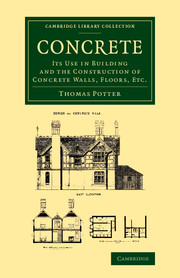
Concrete
- Its Use in Building and the Construction of Concrete Walls, Floors, Etc.
-
- Published online:
- 05 June 2015
- Print publication:
- 10 July 2014
- First published in:
- 1877
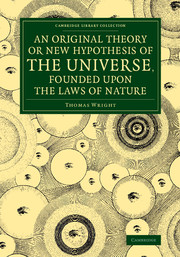
An Original Theory or New Hypothesis of the Universe, Founded upon the Laws of Nature
- And Solving by Mathematical Principles the General Phænomena of the Visible Creation, and Particularly the Via Lactea
-
- Published online:
- 05 June 2015
- Print publication:
- 06 November 2014
- First published in:
- 1750

A Treatise on Engineering Field-Work
- Comprising the Practice of Surveying, Levelling, Laying Out Works, and Other Field Operations
-
- Published online:
- 05 June 2015
- Print publication:
- 21 August 2014
- First published in:
- 1842
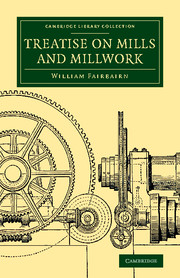
Treatise on Mills and Millwork
-
- Published online:
- 05 June 2015
- Print publication:
- 21 August 2014
- First published in:
- 1861
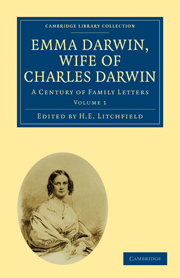
Emma Darwin, Wife of Charles Darwin
- A Century of Family Letters
-
- Published online:
- 05 June 2015
- Print publication:
- 22 April 2010
- First published in:
- 1904
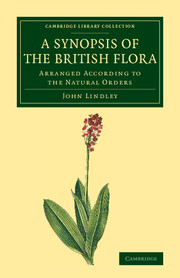
A Synopsis of the British Flora
- Arranged According to the Natural Orders
-
- Published online:
- 05 June 2015
- Print publication:
- 05 March 2015
- First published in:
- 1829
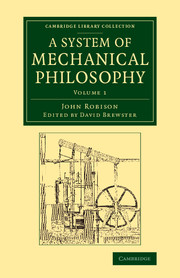
A System of Mechanical Philosophy
-
- Published online:
- 05 June 2015
- Print publication:
- 21 August 2014
- First published in:
- 1822
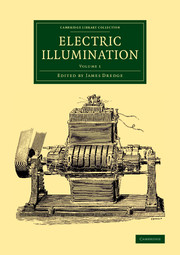
Electric Illumination
-
- Published online:
- 05 June 2015
- Print publication:
- 18 December 2014
- First published in:
- 1882

Facts and Arguments for Darwin
- With Additions by the Author
-
- Published online:
- 05 June 2015
- Print publication:
- 06 November 2014

Recherches sur les ossemens fossiles des quadrupèdes
-
- Published online:
- 05 June 2015
- Print publication:
- 12 March 2015
VIII - Sur le Megatherium, autre animal de la famille des Paresseux, mais de la taille du Rhinocéros, dont un squelette fissile presque complet est conservé au cabinet royal de Madrid
- from IV. PARTIE - Ossemens de Carnassiers et d'autres Onguiculés
-
- Book:
- Recherches sur les ossemens fossiles des quadrupèdes
- Published online:
- 05 June 2015
- Print publication:
- 12 March 2015, pp 345-372
-
- Chapter
- Export citation
Plate Section
-
- Book:
- Recherches sur les ossemens fossiles des quadrupèdes
- Published online:
- 05 June 2015
- Print publication:
- 12 March 2015, pp 270-272
-
- Chapter
- Export citation
III - Sur les ossemens fossiles de Crocodiles,et particulièrement sur ceux des environs du Havre et de Honfleur, avec des remarques sur les squelettes de Sauriens de la Thuringe
- from V. PARTIE - Ossemens fossiles de Quadrupèdes ovipares
-
- Book:
- Recherches sur les ossemens fossiles des quadrupèdes
- Published online:
- 05 June 2015
- Print publication:
- 12 March 2015, pp 509-548
-
- Chapter
- Export citation
Advertissement
-
- Book:
- Recherches sur les ossemens fossiles des quadrupèdes
- Published online:
- 05 June 2015
- Print publication:
- 12 March 2015, pp xiii-xviii
-
- Chapter
- Export citation
X - MÉMOIRE: Sur le squelette presque entier d'un petit quadrupède du genre des sarigues, tiré des mêmes carrières
-
- Book:
- Recherches sur les ossemens fossiles des quadrupèdes
- Published online:
- 05 June 2015
- Print publication:
- 12 March 2015, pp 395-412
-
- Chapter
- Export citation
Mémoire surl'ibis des anciens Egyptiens
-
- Book:
- Recherches sur les ossemens fossiles des quadrupèdes
- Published online:
- 05 June 2015
- Print publication:
- 12 March 2015, pp 117-140
-
- Chapter
- Export citation
Premiere Partie
-
- Book:
- Recherches sur les ossemens fossiles des quadrupèdes
- Published online:
- 05 June 2015
- Print publication:
- 12 March 2015, pp ix-x
-
- Chapter
- Export citation
IX - Sur l'ostéologie du Lamantin; sur la place que le Lamantin et le Dugong doivent occuper dans la méthode na turelle et sur les os fossiles de La mantin et de Phoques
- from IV. PARTIE - Ossemens de Carnassiers et d'autres Onguiculés
-
- Book:
- Recherches sur les ossemens fossiles des quadrupèdes
- Published online:
- 05 June 2015
- Print publication:
- 12 March 2015, pp 373-414
-
- Chapter
- Export citation
Frontmatter
-
- Book:
- Recherches sur les ossemens fossiles des quadrupèdes
- Published online:
- 05 June 2015
- Print publication:
- 12 March 2015, pp i-iii
-
- Chapter
- Export citation
VI - Sur les ossemens fossiles de Tortues
- from V. PARTIE - Ossemens fossiles de Quadrupèdes ovipares
-
- Book:
- Recherches sur les ossemens fossiles des quadrupèdes
- Published online:
- 05 June 2015
- Print publication:
- 12 March 2015, pp 623-640
-
- Chapter
- Export citation
